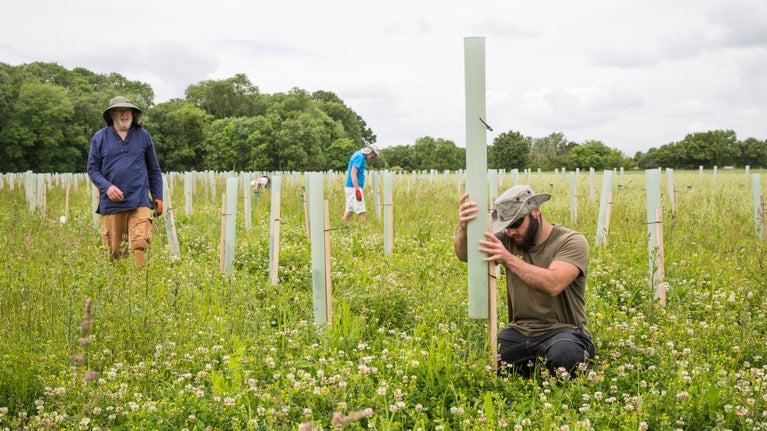
Tackling climate change
Uncover how we’re responding to the changing climate at places in our care.

Biodiversity is the variety and breadth of life on Earth. It encompasses biological diversity on many levels; the vast number of species of plants and animals, the genetic diversity within and between these species and the different biomes and ecosystems they’re part of, including woodland, chalk grassland and marine coastal, among all the other habitats we have here in the UK. Biodiversity also includes the diversity within microscopic organisms, like bacteria, viruses and fungi. Another way to think about it is simply, ‘Big Nature’.
Biodiversity helps us to live healthy and happy lives. It provides us with food, medicinal remedies and we also benefit from many ecosystem services. The latter includes everything from cleaning water and absorbing chemicals – which wetlands do – to providing oxygen for us to breathe. Biodiversity also provides aesthetic and cultural value to our lives and has been shown to increase mental wellbeing.
Sadly, the Earth’s biodiversity is in decline because of activities like deforestation, land-use change, agricultural intensification, over-consumption of natural resources, pollution and climate change.
Some scientists believe that there’s enough evidence to confirm that we’re experiencing the Earth’s sixth mass extinction. This is where there’s a widespread loss of 75 per cent of species over a relatively short geological time period of 2 million years. Scientists believe there have been five previous mass extinctions, the most well-known one is the loss of the dinosaurs caused by an asteroid and others were caused by climatic shifts. But this current mass extinction is different, because it’s caused by humans.
Whilst the scale of biodiversity loss may seem overwhelming, it’s important that we recognise that multiple small and local actions add up. For example, we can support local conservation initiatives, travel as sustainably as we can, recycle and consider our everyday food choices.
Fundamentally, we need to take time to enjoy nature and spread the word; talk to our neighbours, friends and community about the biodiversity in the places we live.
Biodiversity really is something spectacular and you don’t have to travel to the Amazon rainforest or the plains of Africa to see a wide range of species. Go to any natural area and you may be amazed at all the different types of invertebrates, birds and small mammals you can find.
Alternatively, plant a small tree, a windowsill allotment or let a large patch of grass grow in your garden and let the species come to you. You can even document what you find on a range of citizen science apps on your smartphone and help contribute to saving biodiversity that way.
The National Trust is committed to creating 25,000 hectares of new wildlife habitats by 2025 which will provide us with more opportunities to connect to nature. The Trust also promotes ethical consumerism as an important way of life by supporting farms and tenants to produce local, seasonal and certified products, which are often served in National Trust cafés and restaurants.
The National Trust supports biodiversity offsetting. This is when one area is exploited for development and another area is created or restored with the aim for an overall biodiversity gain. This means economic activity can still occur while the environment can continue to flourish.
This article contains contributions from Sophie Pierce. Sophie is a researcher for natural history films and TV, and a graduate from Oxford University with a masters in Biodiversity, Conservation and Management.

Uncover how we’re responding to the changing climate at places in our care.

A hub for multi-disciplinary research projects and research engagement at the University of Oxford
Find out more about our Trusted Source articles, which were created in partnership with the University of Oxford, and explore topics related to the special places in our care.

Discover the fascinating and contentious history of commons, natural green spaces that were once used by the community before many were enclosed by private landowners.

Climate change is the single biggest threat to the places we care for. Take a look at our environmental pledges as we adapt, reduce carbon emissions and address the damage already done.

Discover the vital ways peat supports the environment, from carbon store to archaeological record, and see some of our key projects protecting and restoring the peatland in our care.
